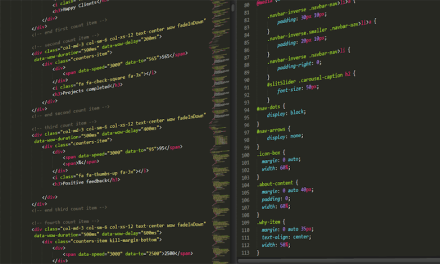Table of Contents
- Introduction
- Key Components of an Interview Scorecard
- Importance of Using an Interview Scorecard
- How to Create an Effective Interview Scorecard
- Common Mistakes to Avoid When Using an Interview Scorecard
- Best Practices for Evaluating Candidates Using a Scorecard
- How to Interpret Scores on an Interview Scorecard
- Using Interview Scorecards to Improve Hiring Decisions
- Incorporating Diversity and Inclusion into Interview Scorecards
- Training Hiring Managers on Using Interview Scorecards
- Q&A
- Conclusion
Unlock the secrets to interview success with this comprehensive guide.
Introduction
Introduction:
Understanding the Interview Scorecard: A Comprehensive Guide
The interview scorecard is a crucial tool used by hiring managers and recruiters to evaluate candidates during the interview process. This comprehensive guide will provide an in-depth look at how the interview scorecard works, what criteria are typically evaluated, and how to interpret the results. By understanding the interview scorecard, you can better prepare for your next job interview and increase your chances of landing the job.
Key Components of an Interview Scorecard
Interview scorecards are a crucial tool used by hiring managers to evaluate candidates during the interview process. These scorecards help ensure that all candidates are assessed consistently and objectively based on predetermined criteria. Understanding the key components of an interview scorecard is essential for both interviewers and candidates to navigate the hiring process effectively.
One of the primary components of an interview scorecard is the evaluation criteria. This includes the specific skills, qualifications, and attributes that the hiring manager is looking for in a candidate. These criteria are typically based on the job description and the requirements of the role. By clearly defining the evaluation criteria upfront, interviewers can ensure that all candidates are assessed fairly and consistently.
Another important component of an interview scorecard is the rating scale. This scale is used to assign a numerical value to each evaluation criterion based on the candidate’s performance. Common rating scales include a numerical scale (e.g., 1-5) or a descriptive scale (e.g., poor, fair, good, excellent). The rating scale helps interviewers quantify the candidate’s performance and make informed hiring decisions.
In addition to the evaluation criteria and rating scale, interview scorecards often include space for comments and feedback. This allows interviewers to provide specific examples and observations to support their ratings. Providing detailed feedback is essential for both the hiring manager and the candidate to understand the rationale behind the evaluation and areas for improvement.
Furthermore, interview scorecards may also include a section for overall impressions or recommendations. This is where the interviewer can summarize their thoughts on the candidate’s overall fit for the role and make a recommendation for next steps. This section provides a holistic view of the candidate’s performance and helps guide the hiring decision.
It is important for interviewers to use the interview scorecard consistently for all candidates to ensure fairness and objectivity. By following the same evaluation criteria, rating scale, and feedback process for each candidate, interviewers can make more accurate and unbiased hiring decisions. Consistency also helps maintain the integrity of the hiring process and ensures that all candidates are evaluated fairly.
For candidates, understanding the key components of an interview scorecard can help them prepare effectively for interviews. By familiarizing themselves with the evaluation criteria and rating scale, candidates can tailor their responses to highlight their strengths and address any potential weaknesses. Additionally, receiving feedback from interviewers can provide valuable insights for self-improvement and future interviews.
In conclusion, the interview scorecard is a valuable tool for evaluating candidates during the hiring process. By understanding the key components of an interview scorecard, both interviewers and candidates can navigate the interview process more effectively. Consistent use of the evaluation criteria, rating scale, feedback process, and overall impressions is essential for making informed hiring decisions and ensuring fairness and objectivity. Ultimately, the interview scorecard plays a critical role in selecting the best candidate for the job and building a strong team.
Importance of Using an Interview Scorecard
In the world of hiring and recruitment, the interview process is a critical step in determining the best candidate for a job. Employers use interviews to assess a candidate’s qualifications, skills, and fit for the role and the company. However, conducting interviews can be a subjective process, with different interviewers evaluating candidates based on their own biases and preferences. This is where an interview scorecard comes in.
An interview scorecard is a tool used by employers to evaluate candidates consistently and objectively. It provides a structured framework for assessing candidates based on predetermined criteria, such as job requirements, skills, experience, and cultural fit. By using an interview scorecard, employers can ensure that all candidates are evaluated fairly and that the best candidate is selected for the job.
One of the key benefits of using an interview scorecard is that it helps to eliminate bias in the hiring process. Interviewers may have unconscious biases that can influence their evaluation of candidates, leading to unfair and inconsistent hiring decisions. By using a scorecard, interviewers are forced to focus on specific criteria and evaluate candidates based on their qualifications and fit for the role, rather than personal preferences.
Another important aspect of using an interview scorecard is that it helps to standardize the interview process. With a scorecard in place, all interviewers are evaluating candidates based on the same criteria, ensuring consistency and fairness in the evaluation process. This can help to reduce the likelihood of hiring mistakes and ensure that the best candidate is selected for the job.
Additionally, an interview scorecard can help to streamline the hiring process by providing a clear and structured framework for evaluating candidates. Interviewers can use the scorecard to guide their questioning and assessment of candidates, making the interview process more efficient and effective. This can save time and resources for both the employer and the candidate, leading to a more positive hiring experience for all parties involved.
Overall, using an interview scorecard is essential for employers who want to make informed and objective hiring decisions. By eliminating bias, standardizing the interview process, and streamlining the evaluation process, an interview scorecard can help employers to select the best candidate for the job. In today’s competitive job market, it is more important than ever for employers to make smart hiring decisions, and an interview scorecard is a valuable tool for achieving this goal.
In conclusion, understanding the importance of using an interview scorecard is essential for employers who want to make fair, consistent, and informed hiring decisions. By using a scorecard, employers can eliminate bias, standardize the interview process, and streamline the evaluation process, leading to better hiring outcomes for both the employer and the candidate. In a competitive job market, having a structured and objective approach to hiring is crucial, and an interview scorecard is a valuable tool for achieving this goal.
How to Create an Effective Interview Scorecard
Interview scorecards are a valuable tool for evaluating candidates during the hiring process. They provide a structured framework for assessing each candidate’s qualifications, skills, and fit for the role. By using an interview scorecard, hiring managers can ensure that they are making informed decisions based on objective criteria rather than subjective impressions.
Creating an effective interview scorecard requires careful planning and consideration. The first step is to clearly define the criteria that will be used to evaluate candidates. This may include technical skills, soft skills, experience, education, and cultural fit. It is important to tailor the criteria to the specific requirements of the role and the needs of the organization.
Once the criteria have been established, it is important to assign weights to each criterion based on its importance to the role. This will help ensure that the evaluation process is fair and consistent. For example, technical skills may be given a higher weight for a software engineering role, while cultural fit may be more important for a customer-facing position.
Next, it is important to develop a rating scale that will be used to assess candidates on each criterion. This may be a numerical scale, such as 1-5, or a descriptive scale, such as “poor,” “fair,” “good,” and “excellent.” It is important to provide clear definitions for each rating to ensure consistency in evaluation.
During the interview process, it is important for interviewers to take detailed notes on each candidate’s responses to the interview questions. These notes should be specific and objective, focusing on the candidate’s qualifications and how they align with the criteria outlined in the scorecard. Interviewers should also be mindful of any biases that may influence their evaluation and strive to remain objective throughout the process.
After the interviews have been completed, it is time to compile the feedback from each interviewer and calculate the overall score for each candidate. This can be done by averaging the scores from each interviewer or by using a weighted average based on the criteria weights established earlier. The final step is to review the scores and make a decision on which candidate to move forward in the hiring process.
In addition to evaluating individual candidates, interview scorecards can also be used to identify trends and patterns in the hiring process. For example, if multiple candidates are consistently scoring low on a particular criterion, it may indicate that the criterion is not well-defined or that there is a gap in the evaluation process. By analyzing the data from interview scorecards, organizations can identify areas for improvement and make more informed decisions in future hiring processes.
In conclusion, interview scorecards are a valuable tool for evaluating candidates during the hiring process. By clearly defining criteria, assigning weights, developing a rating scale, taking detailed notes, and compiling feedback, organizations can ensure that they are making informed decisions based on objective criteria. By using interview scorecards effectively, organizations can improve the quality of their hires and build a strong, talented team.
Common Mistakes to Avoid When Using an Interview Scorecard

Interview scorecards are a valuable tool used by many organizations to evaluate candidates during the hiring process. They provide a structured way to assess each candidate’s qualifications, skills, and fit for the role. However, despite their usefulness, interview scorecards can sometimes lead to biased or inaccurate evaluations if not used correctly. In this article, we will discuss some common mistakes to avoid when using an interview scorecard to ensure fair and effective candidate evaluations.
One common mistake that organizations make when using interview scorecards is failing to clearly define the criteria for evaluation. Without clear guidelines on what qualities or skills are being assessed, interviewers may have different interpretations of what constitutes a strong candidate. This can lead to inconsistent evaluations and unfair treatment of candidates. To avoid this mistake, it is important to establish clear and specific criteria for evaluation before the interview process begins. This will ensure that all interviewers are on the same page and are evaluating candidates based on the same standards.
Another common mistake is relying too heavily on the interview scorecard as the sole determinant of a candidate’s suitability for the role. While the scorecard is a useful tool for evaluating candidates, it should not be the only factor considered in the decision-making process. Other factors, such as work experience, references, and cultural fit, should also be taken into account when making hiring decisions. By considering a variety of factors, organizations can make more informed and well-rounded decisions about which candidates are the best fit for the role.
One of the most important aspects of using an interview scorecard is ensuring that interviewers are properly trained on how to use it effectively. Without proper training, interviewers may not understand how to accurately assess candidates or may inadvertently introduce bias into their evaluations. To avoid this mistake, organizations should provide training to interviewers on how to use the scorecard, including how to interpret the criteria, provide feedback, and make fair and objective evaluations. By ensuring that interviewers are properly trained, organizations can improve the accuracy and reliability of their candidate evaluations.
Another common mistake to avoid when using an interview scorecard is failing to provide feedback to candidates after the interview process. Candidates invest time and effort into preparing for interviews, and it is important to provide them with constructive feedback on their performance. This feedback can help candidates improve their skills and performance in future interviews, as well as maintain a positive impression of the organization. By providing feedback to candidates, organizations can demonstrate their commitment to fairness and transparency in the hiring process.
In conclusion, interview scorecards are a valuable tool for evaluating candidates during the hiring process. However, to ensure fair and effective evaluations, organizations must avoid common mistakes such as failing to define evaluation criteria, relying too heavily on the scorecard, not training interviewers properly, and failing to provide feedback to candidates. By addressing these mistakes and using interview scorecards effectively, organizations can make more informed and objective hiring decisions that benefit both the organization and the candidates.
Best Practices for Evaluating Candidates Using a Scorecard
Interviewing candidates is a crucial step in the hiring process, as it allows employers to assess a candidate’s qualifications, skills, and fit for the role. To ensure a fair and consistent evaluation of candidates, many organizations use interview scorecards. These scorecards are designed to help interviewers objectively assess candidates based on predetermined criteria. In this article, we will explore the importance of interview scorecards and provide a comprehensive guide on how to effectively use them to evaluate candidates.
Interview scorecards serve as a structured tool that helps interviewers evaluate candidates based on specific criteria. By using a scorecard, interviewers can ensure that all candidates are assessed fairly and consistently, reducing the risk of bias in the hiring process. Additionally, scorecards help interviewers focus on the most important aspects of a candidate’s qualifications and skills, making it easier to compare candidates and make informed hiring decisions.
When creating an interview scorecard, it is important to first identify the key criteria that are essential for success in the role. This may include technical skills, soft skills, experience, and cultural fit. Once the criteria have been identified, interviewers can develop a rating scale to assess candidates on each criterion. Common rating scales include numerical scales, such as 1-5 or 1-10, or descriptive scales, such as “poor,” “average,” and “excellent.”
During the interview process, interviewers should use the scorecard to guide their evaluation of candidates. For each criterion, interviewers should ask specific questions to assess the candidate’s qualifications and skills. After the interview, interviewers can use the rating scale to assign a score to each criterion based on the candidate’s responses. This allows interviewers to objectively evaluate candidates and compare their performance against the predetermined criteria.
In addition to assessing candidates based on predetermined criteria, interview scorecards can also help interviewers provide feedback to candidates. By documenting the candidate’s performance on each criterion, interviewers can provide specific and constructive feedback to help candidates improve their interview skills and better prepare for future interviews. This feedback can be invaluable to candidates, as it can help them understand their strengths and weaknesses and make improvements for future interviews.
When evaluating candidates using a scorecard, it is important for interviewers to be consistent and objective in their assessments. Interviewers should avoid letting personal biases or preferences influence their evaluation of candidates. Instead, interviewers should focus on the candidate’s qualifications and skills as they relate to the predetermined criteria. By maintaining objectivity, interviewers can ensure a fair and unbiased evaluation of all candidates.
In conclusion, interview scorecards are a valuable tool for evaluating candidates during the hiring process. By using a scorecard, interviewers can ensure a fair and consistent evaluation of candidates, reduce the risk of bias, and provide specific feedback to candidates. When creating and using an interview scorecard, it is important to identify key criteria, develop a rating scale, ask specific questions during the interview, and provide objective feedback to candidates. By following these best practices, organizations can improve their hiring process and make more informed decisions when selecting candidates for a role.
How to Interpret Scores on an Interview Scorecard
Interview scorecards are a valuable tool used by hiring managers to evaluate candidates during the interview process. These scorecards provide a structured way to assess each candidate’s qualifications, skills, and fit for the role. Understanding how to interpret scores on an interview scorecard is essential for both hiring managers and job seekers.
When interpreting scores on an interview scorecard, it is important to consider the criteria being evaluated. Most scorecards include a list of competencies or skills that are relevant to the position. These may include technical skills, communication abilities, problem-solving skills, and cultural fit. Each criterion is typically rated on a scale, such as 1-5 or poor to excellent.
One key aspect of interpreting scores on an interview scorecard is understanding what each rating means. For example, a score of 1 may indicate that the candidate does not meet the minimum requirements for the position, while a score of 5 may indicate that the candidate exceeds expectations. It is important to have a clear understanding of the criteria and rating scale in order to accurately interpret the scores.
Another important consideration when interpreting scores on an interview scorecard is the overall score. Some scorecards assign a total score to each candidate based on their performance across all criteria. This total score can provide a quick snapshot of how well the candidate performed in the interview. However, it is important to remember that the total score is just one piece of the puzzle and should be considered in conjunction with the individual scores for each criterion.
In addition to the scores themselves, it is also important to consider the feedback provided by the interviewer. Many interview scorecards include space for comments or notes on each criterion. This feedback can provide valuable insights into the candidate’s strengths and areas for improvement. It is important to carefully review this feedback in order to gain a more comprehensive understanding of the candidate’s performance.
When interpreting scores on an interview scorecard, it is important to remember that no candidate is perfect. It is rare for a candidate to receive all top scores on a scorecard, and it is important to consider the overall picture of the candidate’s qualifications and fit for the role. A candidate may excel in some areas and struggle in others, and it is important to take a holistic view of their performance.
Overall, interpreting scores on an interview scorecard requires a careful and thoughtful approach. It is important to understand the criteria being evaluated, the rating scale, and the feedback provided by the interviewer. By taking all of these factors into consideration, hiring managers can make informed decisions about which candidates are the best fit for the role.
In conclusion, understanding how to interpret scores on an interview scorecard is essential for both hiring managers and job seekers. By carefully reviewing the criteria, rating scale, and feedback provided, hiring managers can make informed decisions about which candidates are the best fit for the role. Job seekers can also benefit from understanding how their performance is being evaluated and use this information to improve their interview skills. Interview scorecards are a valuable tool in the hiring process, and by understanding how to interpret scores, both hiring managers and job seekers can make the most of this tool.
Using Interview Scorecards to Improve Hiring Decisions
Interview scorecards are a valuable tool for companies looking to make informed hiring decisions. By using a structured evaluation system, employers can objectively assess candidates based on predetermined criteria, ultimately leading to more successful hires. In this comprehensive guide, we will explore the importance of interview scorecards, how to create an effective one, and best practices for using them in the hiring process.
One of the key benefits of using interview scorecards is that they provide a standardized way to evaluate candidates. This helps ensure that all candidates are assessed fairly and consistently, reducing the risk of bias in the hiring process. By clearly defining the criteria that are important for the role, interviewers can focus on the skills and qualities that are most relevant to the job, leading to better hiring decisions.
When creating an interview scorecard, it is important to start by identifying the key competencies and qualities that are required for the role. This may include technical skills, soft skills, and cultural fit. Once these criteria have been established, interviewers can develop a rating scale to assess candidates on each competency. This scale should be clear and easy to use, allowing interviewers to provide objective feedback on each candidate.
In addition to evaluating candidates on specific competencies, interview scorecards can also be used to track overall impressions of each candidate. This can include factors such as communication skills, professionalism, and enthusiasm for the role. By capturing these qualitative assessments, employers can gain a more holistic view of each candidate and make more informed hiring decisions.
When using interview scorecards in the hiring process, it is important to train interviewers on how to use them effectively. This may include providing guidance on how to rate candidates, how to provide constructive feedback, and how to use the scorecard to compare candidates against each other. By ensuring that interviewers are comfortable with the scorecard process, employers can maximize the value of this tool in the hiring process.
Another best practice for using interview scorecards is to gather feedback from multiple interviewers. By collecting input from different perspectives, employers can gain a more comprehensive view of each candidate and reduce the risk of bias. This can also help identify any discrepancies in ratings, allowing employers to address any inconsistencies before making a final hiring decision.
In conclusion, interview scorecards are a valuable tool for companies looking to improve their hiring process. By using a structured evaluation system, employers can objectively assess candidates based on predetermined criteria, leading to more successful hires. By creating an effective scorecard, training interviewers on how to use it, and gathering feedback from multiple sources, employers can make more informed hiring decisions and build a strong team of talented employees.
Incorporating Diversity and Inclusion into Interview Scorecards
In today’s increasingly diverse and inclusive workplace, it is essential for organizations to incorporate diversity and inclusion into their interview processes. One way to do this is by utilizing interview scorecards that are specifically designed to assess candidates based on these important factors.
Interview scorecards are a valuable tool for evaluating candidates in a structured and consistent manner. They provide a framework for assessing candidates based on specific criteria, such as skills, experience, and cultural fit. By incorporating diversity and inclusion into interview scorecards, organizations can ensure that they are evaluating candidates based on their ability to contribute to a diverse and inclusive work environment.
One way to incorporate diversity and inclusion into interview scorecards is by including specific questions that address these topics. For example, interviewers can ask candidates about their experience working with diverse teams, their understanding of diversity and inclusion issues, and their commitment to promoting diversity and inclusion in the workplace. By asking these types of questions, organizations can gain valuable insights into a candidate’s attitudes and beliefs regarding diversity and inclusion.
In addition to asking specific questions, organizations can also evaluate candidates based on their responses to hypothetical scenarios that involve diversity and inclusion issues. For example, interviewers can present candidates with a scenario in which they must address a conflict between team members from different cultural backgrounds. By observing how candidates respond to these types of scenarios, organizations can assess their ability to navigate complex diversity and inclusion issues in the workplace.
Another way to incorporate diversity and inclusion into interview scorecards is by evaluating candidates based on their past experiences and accomplishments in this area. For example, organizations can look for candidates who have a track record of promoting diversity and inclusion in their previous roles, such as by leading diversity initiatives or advocating for underrepresented groups. By evaluating candidates based on their past experiences, organizations can identify candidates who are likely to contribute to a diverse and inclusive work environment.
It is important for organizations to train interviewers on how to effectively evaluate candidates based on diversity and inclusion criteria. Interviewers should be educated on the importance of diversity and inclusion in the workplace, as well as on how to assess candidates based on these factors. By providing interviewers with the necessary training and resources, organizations can ensure that they are evaluating candidates in a fair and unbiased manner.
In conclusion, incorporating diversity and inclusion into interview scorecards is essential for organizations that are committed to creating a diverse and inclusive work environment. By asking specific questions, evaluating candidates based on their responses to hypothetical scenarios, and assessing their past experiences in this area, organizations can identify candidates who are likely to contribute to a diverse and inclusive workplace. By training interviewers on how to effectively evaluate candidates based on diversity and inclusion criteria, organizations can ensure that they are hiring candidates who will help to promote diversity and inclusion in the workplace.
Training Hiring Managers on Using Interview Scorecards
Interview scorecards are a valuable tool for hiring managers to evaluate candidates in a structured and consistent manner. By using a standardized set of criteria, interview scorecards help ensure that all candidates are assessed fairly and objectively. However, in order for interview scorecards to be effective, hiring managers must be properly trained on how to use them.
One of the key benefits of interview scorecards is that they provide a clear framework for evaluating candidates. By breaking down the evaluation process into specific criteria, hiring managers can more easily compare candidates and make informed decisions. This can help reduce bias and ensure that the best candidate is selected for the job.
In order to effectively use interview scorecards, hiring managers must first understand the criteria that are being evaluated. This may include factors such as relevant experience, technical skills, communication abilities, and cultural fit. By clearly defining these criteria, hiring managers can ensure that they are assessing candidates based on the most important factors for the role.
Once the criteria have been established, hiring managers must be trained on how to use the interview scorecard during the evaluation process. This may involve providing guidance on how to ask questions that align with the criteria, how to rate candidates on each criterion, and how to provide feedback on the evaluation.
It is also important for hiring managers to understand the importance of consistency when using interview scorecards. By consistently applying the same criteria to all candidates, hiring managers can ensure that their evaluations are fair and unbiased. This can help prevent discrimination and ensure that all candidates are given a fair opportunity to demonstrate their qualifications.
In addition to consistency, hiring managers must also be trained on how to provide constructive feedback to candidates based on the interview scorecard. This feedback should be specific, actionable, and focused on areas where the candidate can improve. By providing feedback in a constructive manner, hiring managers can help candidates understand their strengths and weaknesses and ultimately improve their chances of success in future interviews.
Another important aspect of training hiring managers on using interview scorecards is ensuring that they understand the legal implications of their evaluations. It is important for hiring managers to be aware of anti-discrimination laws and to ensure that their evaluations are based on job-related criteria. By following legal guidelines, hiring managers can help protect their organization from potential legal challenges.
Overall, training hiring managers on using interview scorecards is essential for ensuring that the evaluation process is fair, consistent, and effective. By providing guidance on how to use the scorecard, understand the criteria, maintain consistency, provide constructive feedback, and follow legal guidelines, hiring managers can help ensure that the best candidate is selected for the job. Interview scorecards are a valuable tool for hiring managers, and with proper training, they can be used to make informed hiring decisions that benefit both the organization and the candidates.
Q&A
1. What is an interview scorecard?
An interview scorecard is a tool used by hiring managers to evaluate and compare candidates based on specific criteria.
2. Why is an interview scorecard important?
An interview scorecard helps ensure consistency in evaluating candidates and provides a structured approach to making hiring decisions.
3. What are the key components of an interview scorecard?
Key components of an interview scorecard typically include criteria such as job-related skills, experience, cultural fit, and overall potential.
4. How can an interview scorecard help improve the hiring process?
An interview scorecard can help streamline the hiring process, reduce bias, and ensure that hiring decisions are based on objective criteria.
5. How should interviewers use an interview scorecard during the interview process?
Interviewers should use the interview scorecard to guide their questions, take notes on candidate responses, and rate candidates based on the established criteria.
6. How can interviewers ensure they are using the interview scorecard effectively?
Interviewers should be trained on how to use the interview scorecard, regularly review and update the criteria, and provide feedback on the effectiveness of the tool.
7. What are some common pitfalls to avoid when using an interview scorecard?
Common pitfalls include using vague or subjective criteria, failing to calibrate scores among interviewers, and not providing feedback to candidates.
8. How can organizations implement an interview scorecard effectively?
Organizations can implement an interview scorecard effectively by training interviewers, aligning the criteria with the job requirements, and regularly reviewing and updating the tool.
9. What are the benefits of using an interview scorecard in the hiring process?
Benefits of using an interview scorecard include improved consistency in evaluating candidates, reduced bias in hiring decisions, and a more structured approach to selecting the best candidates for the job.
Conclusion
Understanding the Interview Scorecard: A Comprehensive Guide provides valuable insights into the importance of using a structured evaluation tool during the interview process. By utilizing a scorecard, hiring managers can objectively assess candidates based on predetermined criteria, leading to more informed hiring decisions. This guide serves as a useful resource for organizations looking to improve their interview processes and ultimately make better hiring choices.





